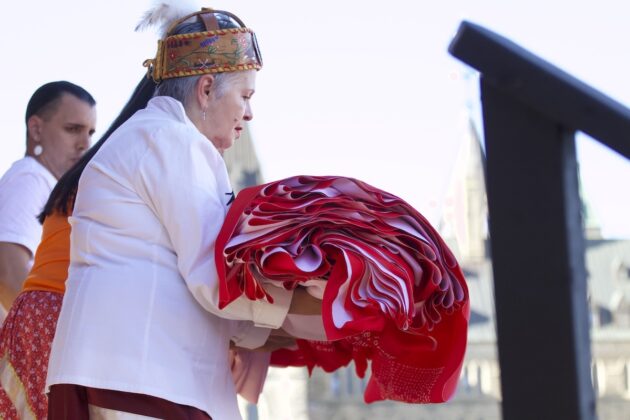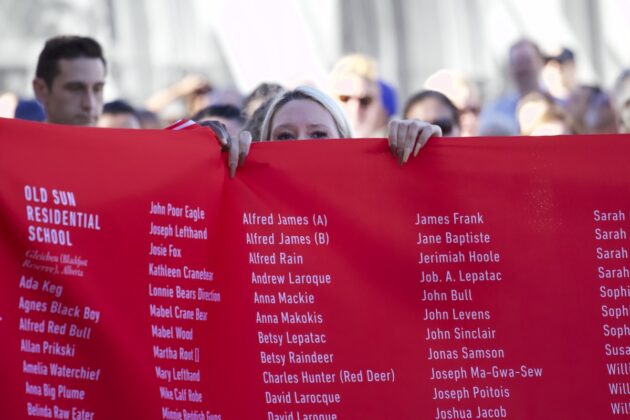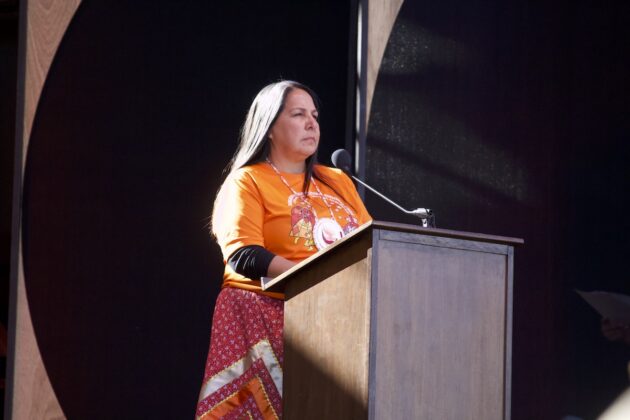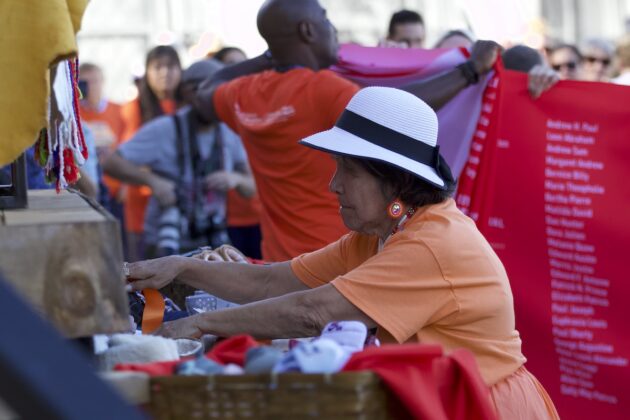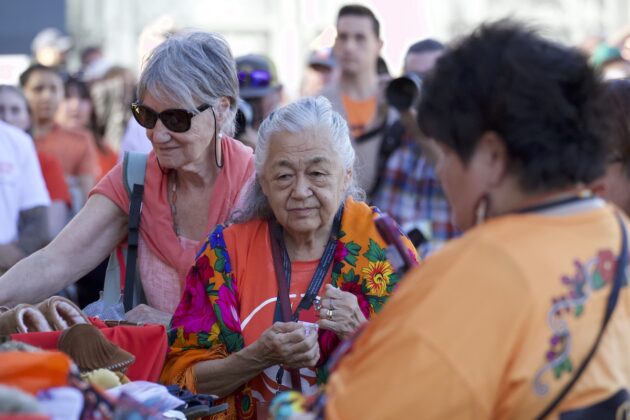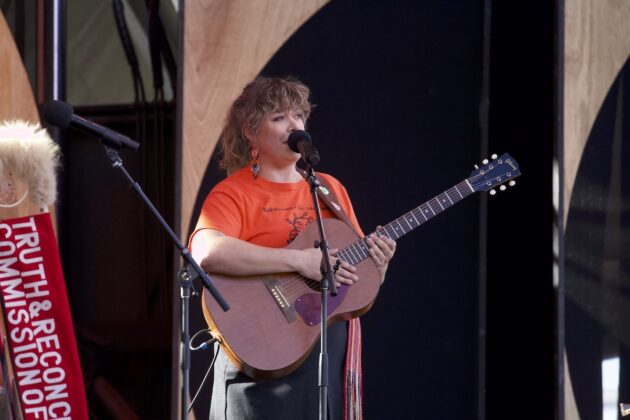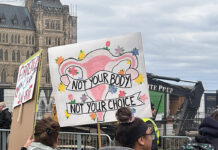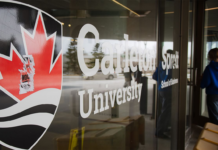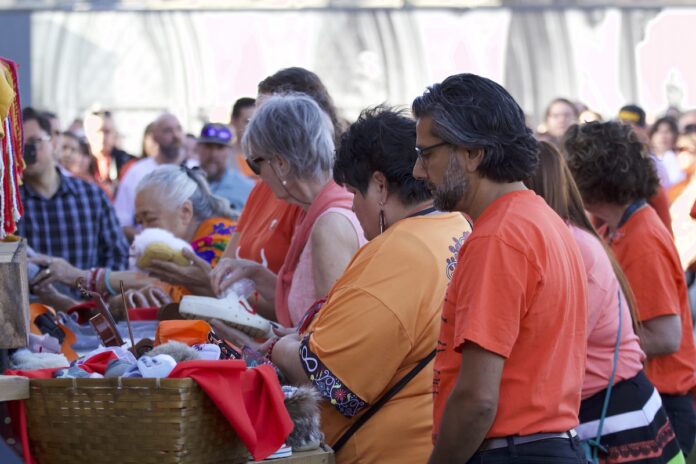
A sea of orange covered Parliament Hill as community members gathered to honour the National Day for Truth and Reconciliation on Sept. 30.
This year marks the fourth annual National Day for Truth and Reconciliation, otherwise known as Orange Shirt Day, to honour the Indigenous children who never came home from residential schools, as well as the intergenerational trauma that persists in Indigenous communities.
Speakers and survivors spoke in Indigenous languages to tell their stories and share messages of reconciliation.
Viewers shed tears during a memorial cloth procession where a red banner identifying the school and names of residential school victims was folded and laid to rest.
Several members of the public offered traditional moccasins and shoes to honour the Indigenous children who never came home.
Stephanie Scott, daughter of a residential school survivor and executive director of the National Centre for Truth and Reconciliation, said the day was an opportunity to educate and invite more people into the conversation.
“Learn the facts about the residential schools from the people who lived it,” Scott said. “Respect the survivors, respect their language, amplify their voices.”
Scott said we should call out all levels of government and churches to continue the work of truth to help find the missing children who never came home.
“We as First Nation, Inuit and Métis people, should not have to fight and lobby for funding in our own lands,” she said. “We have a sacred duty to remember all of the children who never came home.”
Following Scott, Gov. Gen. Mary Simon, who made history in 2021 as the first Indigenous Governor General, moved the audience with her speech.
“Today, we commemorate the thousands of lives forever lost or traumatically impacted by the residential school system,” Simon said. “The flags and symbols are not enough.”
Simon said we still have work to do, but she feels increasingly hopeful.
“You can share Indigenous knowledge and help reconcile our history. You can speak out against discrimination when you see it,” she said.
She applauded survivors for having tremendous courage for continuing to share their stories of “broken families gradually rebuilding their bonds, communities and identities.”
Jenn Brammall said she attended the ceremony to ensure her son, Louis, was part of the reconciliation ceremony. Brammall is part of the Ojibwe community in Thunder Bay, Ont. Her father, who she never met, was a residential school survivor.
“We didn’t know we even had an Indigenous parent,” Brammall said. “There were many reasons why we’ve come today, to support a lot of people who didn’t make it back.”
Brammall said the National Day for Truth and Reconciliation was an important day for survivors to speak their truth and keep their culture “strong and alive.”
“It was very empowering,” Brammall said. “This day is important and [it] needs to keep going forward, throughout the years to come.”
Ceremony attendee Alex Doran said she learned about Indigenous history through her partner’s family, which includes residential school survivors.
“The connection I have is observer,” Doran said. “A lot of people need to just listen to the stories.”
“I personally didn’t even learn about [Indigenous history] in high school,” Doran added. “It’s about what happened in Canada and if you can support [survivors], that would really move things along.”
University of Ottawa communications graduate Ieronhenehtha Lazore said the sense of community at the ceremony was important to her, especially while dressed in traditional regalia.
She identifies as Mohawk, with her community located at Akwesasne reserve outside Cornwall, Ont.
“As an Indigenous person, I am connected generationally to truth and reconciliation,” Lazore said, adding that several of her relatives attended residential schools and Indian day schools.
Although it can take an emotional toll, Lazore said watching Indigenous and non-Indigenous communities gather to honour and support one another was an important part of the day.
“It’s a lot to take on mentally and spiritually, as well as emotionally,” Lazore said. “It’s obviously a day of mourning and a day of remembering.”
Featured image by Cassandra Bellefeuille/The Charlatan.


